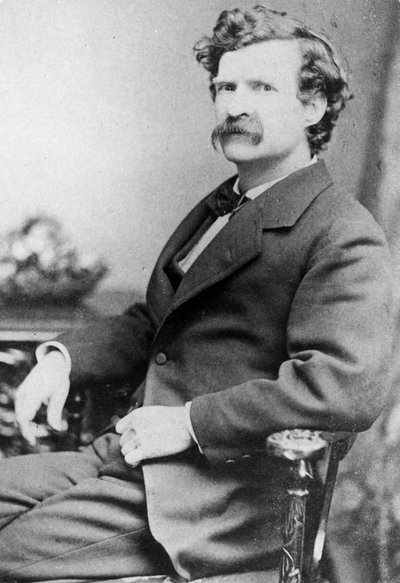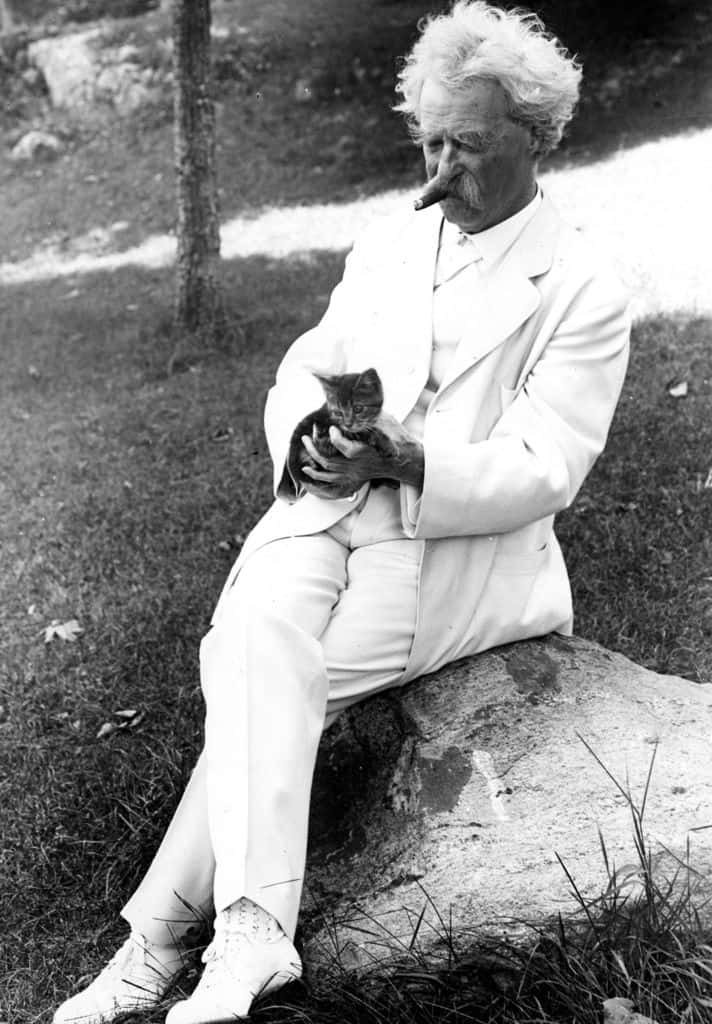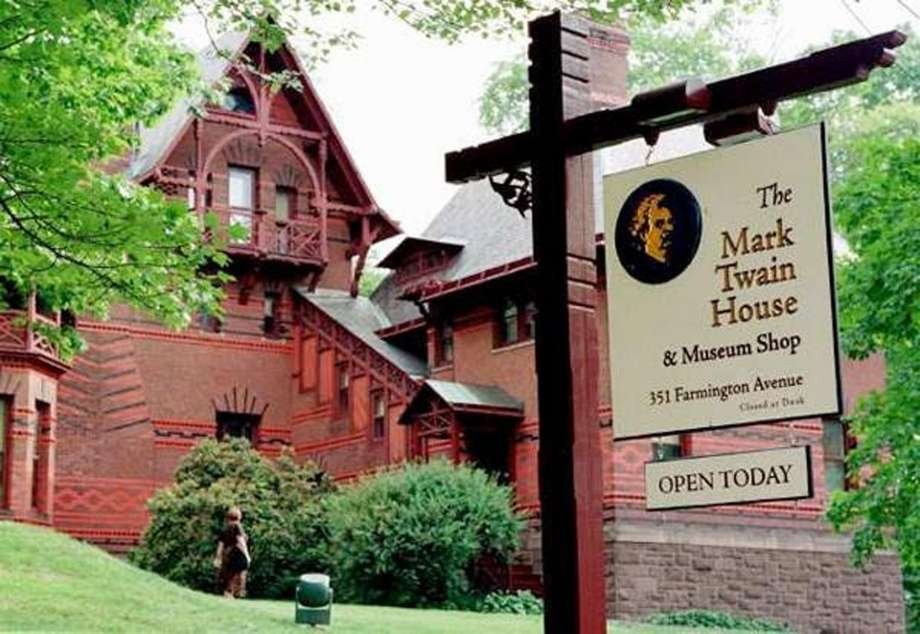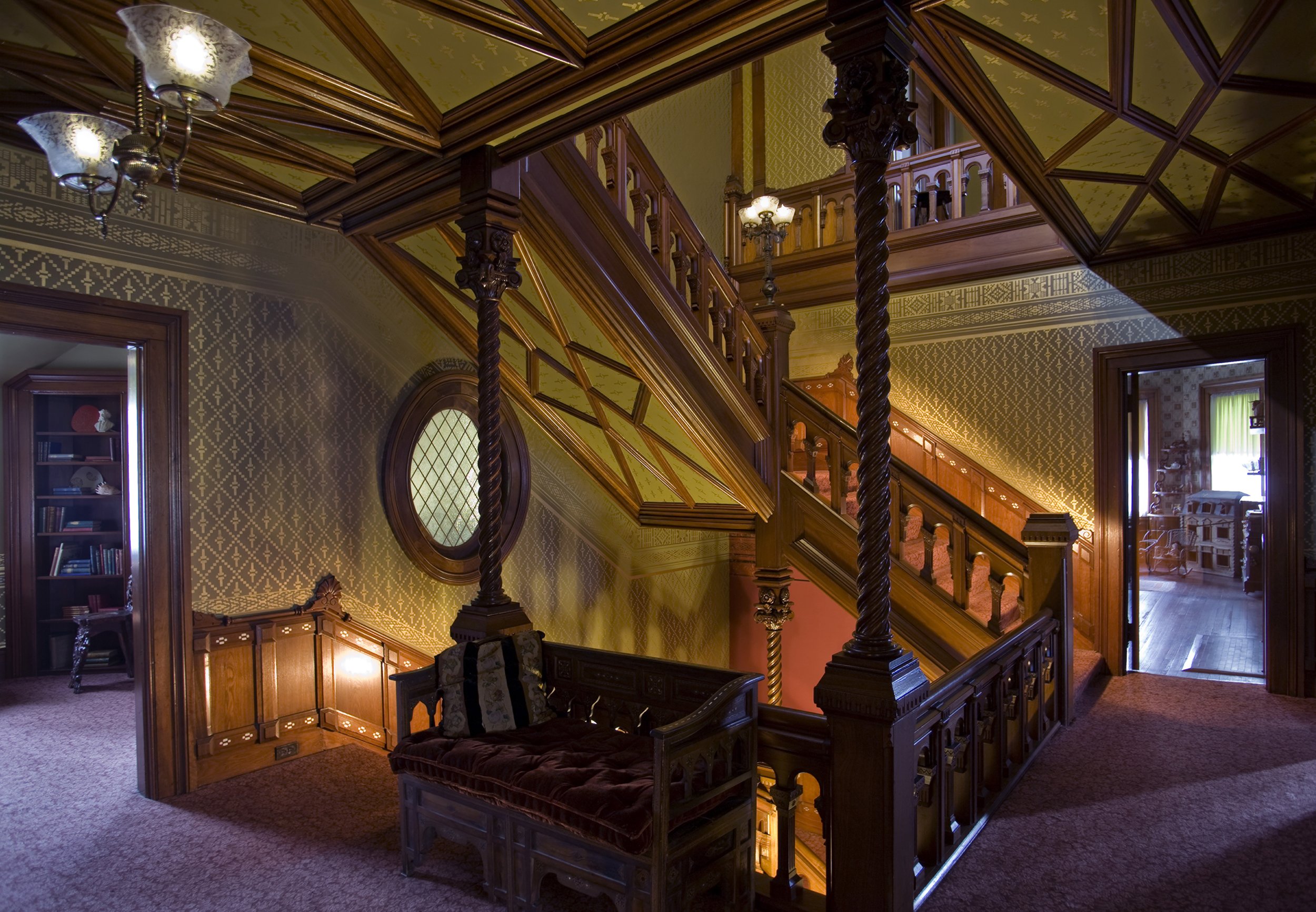WHERE TOM AND HUCK WERE BORN
HARTFORD, CT — Though Mark Twain is pushing 190, he hasn’t aged much. Unlike most dead writers, Twain remains as fresh as ever. To wit:
— “Suppose you were an idiot. Now suppose you were a member of Congress. But I repeat myself.”
From “roughing it” out West to riding an ass — and traveling with a few — through the Holy Land, “the Lincoln of our literature” roamed the world. But for much of his career, he came home to a single — and singular — house.
The Mark Twain Homestead would be remarkable no matter who had lived here. This fantastic Victorian has been called “a cross between a cuckoo clock, a medieval castle, and a steamship.” The most unusual of American writers’ homes, the Twain Homestead is an oasis of style, history, and humor.
Twain left his legacy from coast to coast. You can find his writing desks in assorted museums. His hometown of Hannibal is a tourist trap featuring the Becky Thatcher Restaurant and Tom Sawyer’s white-washed fence. Too many fans make the Missouri river town their only pilgrimage. A pity since, although Tom and Huck played there, both were born here in Hartford. On the third floor. But that comes at the end of the tour.
“This is the house Twain built with his wife’s money,” tour guide Diana Creamer says. Stepping inside, we see how much money there was. From the plush entry hall to the ornate ceiling atop the spiraling staircase, every inch of the house is hand-crafted and saturated with memories of Twain, his wife Livy, and their three daughters. But unlike other Gilded Age mansions, this one has wit.
“There ought to be a room in this house to swear in," Twain said. "It's dangerous to have to repress an emotion like that."
Though dimly lit, Twain’s house shines with innovation. Here in the living room is the 12-foot mirror his father-in-law, a wealthy industrialist, gave Sam Clemens and Olivia Langdon as a wedding present. Elsewhere are fireplaces that seem without chimneys. To add light, the architect diverted each chimney around a window. “Speaking tubes” lace the house, letting guests call from upper rooms. And then there is wood, Wood, WOOD! Oak and mahogany on the first floor, butternut on the second, Southern pine on the third.
Construction began in 1871, when Twain was already famous for his story about a jumping frog. His first book was due any day. Three years later, with his first book, The Innocents Abroad, a best-seller, Sam and Livy moved in — on the second floor. Carpenters were still hammering below.
“I kill them when I get opportunities,” Twain wrote a friend, “but the builder goes & gets more.”
The house soon swarmed with little girls. Suzy, Jean, Clara. Twain told them stories based on figures he brought to life from the carved wood on the mantelpiece. The girls loved cats, Twain did not, so he named the pets Sin, Famine, Pestilence, Lazy, Stray. . .
Though reveling in family, Twain preserved his muse in a single room. If, as Hemingway said, “all modern American literature comes from one book by Mark Twain called Huckleberry Finn,” then Twain’s third floor billiards room is our literature’s Garden of Eden.
There isn’t much wood here, and no sign of children. Instead, the walls are a deep red, as in Van Gogh’s “Night Cafe,” with a billiards table at center stage. Off in one corner is the small writing desk. There, along with making Tom and Huck immortal, Twain wrote Life on the Mississippi, Roughing It, The Prince and The Pauper, and A Connecticut Yankee in King Arthur’s Court. Maybe it’s been a while since you read Twain. Maybe you should again.
— “Clothes make the man. Naked people have very little influence on society.”
— “Always respect your superiors. If you have any.”
But literary genius mixes badly with business. By 1894, disastrous investments left Twain bankrupt. The house, in his wife’s name, was safe from creditors, but the family could not afford to run the place. Renting it, Twain hit the lecture circuit, only coming back a year later. “As soon as I entered this front door I was seized with a furious desire to have us all in this house again & right away, & never go outside the grounds any more forever. . . It is the loveliest home that ever was.”
Back on the road, tragedy destroyed his hopes. In 1896, Suzy Clemens died of spinal meningitis. She was 24. Twain realized he and Livy could never live here again, not with Suzy’s memory in every corner. The couple never returned. Twain sold the house in 1903 and died seven years later.
Twain’s house now draws 70,000 annual visitors. But walking through the old place, you can’t help thinking he would bristle at the invasion.
“To us our house was not unsentient matter,” Twain wrote. “It had a heart & a soul & eyes to see us with, & approvals & solicitudes & deep sympathies; it was of us, & we were in its confidence, & lived in its grace & in the peace of its benediction. We never came home from an absence that its face did not light up & speak out its eloquent welcome — & we could not enter it unmoved.”
















